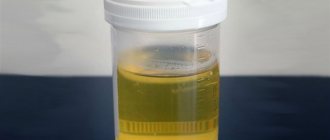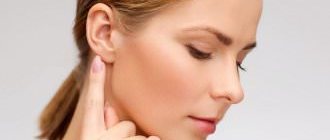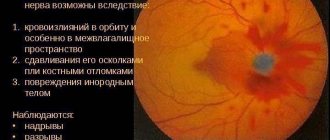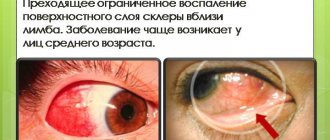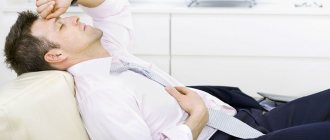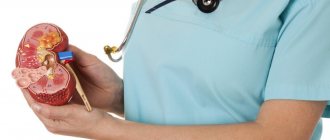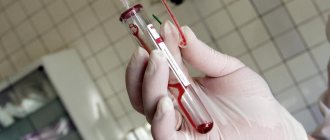This article talks about the symptoms of facial paresis in newborns. Describes the causes, diagnosis, treatment (including surgery), consequences, prognosis and prevention of the disease.
One of the possible complications of the birth process for a child may be facial nerve paresis . The facial nerve moves the facial muscles and is responsible for the first search reflexes (sucking). Damage during childbirth to this nerve is caused by its passage in a narrow canal, which increases the risk of paresis due to prolonged compression of the nerve fiber.
Facial nerve paresis is characterized by immobilization of the muscles on the affected side.
Types of facial nerve paresis
Facial nerve paresis is divided into:
- Central paresis;
- Peripheral paresis;
- Congenital.
Peripheral paresis is a more common complication during childbirth due to local compression of the facial nerve itself. Peripheral paresis is also called Bell's palsy.
Manifests:
- hypotonicity ;
- asymmetry of the face (warping of the mouth, smoothing of the nasolabial fold);
- lagophthalmos (the eyeball points upward when trying to close the eye);
- pain in the area of innervation of the affected nerve, in the ear area, behind it, in the back of the head, in the eye;
- leaking from the corner of the lips;
- drying out of the oral mucosa;
- impairment ;
- disorder ;
- lacrimation or lack of eye hydration on the side of the innervation of the affected nerve.
Central paresis occurs as a consequence of more dangerous birth injuries, accompanied by brain damage, stroke and manifests itself:
- Weakening of the muscles of the lower part of the face;
- Hemiparesis not only of the face, but also of the torso;
- Both sides of the face often affected
- The upper face and eyes retain their function and are not affected by symptoms;
- No taste disturbances.
Congenital facial nerve palsy occurs when there is an abnormality of the facial nerve.
Prices for services *
| Name of service | Price |
| Consultation with a neurologist, MD/Professor | 8250 rub. |
| Appointment and consultation with a neurologist, a specialist in cognitive impairment | 5150 rub. |
| Initial consultation with a physical therapy doctor | 3600 rub. |
| Consultation with a physical therapy doctor, repeated | 2900 rub. |
| Consultation with a physical therapy doctor, Ph.D., primary | 5150 rub. |
| Consultation with a physical therapy doctor, Ph.D., repeated | 3600 rub. |
| Initial consultation with a physiotherapist | 3600 rub. |
| Consultation with a physiotherapist, repeated | 2900 rub. |
| Consultation with a speech therapist-speech pathologist, primary (including an initial speech therapy examination and development of a rehabilitation training program) | 6700 rub. |
| Repeated consultation with a psychotherapist | 6000 rub. |
| Individual lesson with a neuropsychologist-neurodefectologist as part of a comprehensive program | 3410 rub. |
| Advanced Neuropsychological Testing | 5665 rub. |
| Neuropsychological testing | 3960 rub. |
| Group clinical and psychological counseling (up to 30 minutes) | 4000 rub. |
| Family clinical and psychological counseling (up to 30 minutes) | 5000 rub. |
| Comprehensive speech therapist session using hardware techniques | 5500 rub. |
| Group lesson with speech therapist | 2200 rub. |
| Individual psychological correction (up to 30 min) | 3400 rub. |
| Correctional session with a speech therapist-defectologist (outpatient) | 3800 rub. |
| Individual lesson on psychological social adaptation | 4565 rub. |
| Individual psychological correction | 6820 rub. |
| Cognitive training session (up to 30 minutes) | 3410 rub. |
| Cognitive training session (up to 60 minutes) | 4950 rub. |
| Individual lesson on restoration of speech functions | 4565 rub. |
| Correctional lesson with a speech therapist-defectologist (30 min) | 3410 rub. |
| Speech therapy examination | 3410 rub. |
| Lymphatic drainage manual massage | 5500 rub. |
| Acupuncture cupping massage | 1705 rub. |
| Therapeutic massage as part of a comprehensive program | 3410 rub. |
| Therapeutic massage of one anatomical area (up to 15 minutes) | 2200 rub. |
| Acupuncture session | 4290 rub. |
| One zone massage (20 min) STAFF ONLY | 1000 rub. |
| Individual kinesiotherapy session as part of a comprehensive program (up to 30 minutes) | 2750 rub. |
| Robotic mechanotherapy as part of a comprehensive program (up to 30 minutes) | 2750 rub. |
| Individual lesson on restoring walking function using an exoskeleton | 5390 rub. |
| Individual kinesiotherapy session (up to 30 minutes) | 2750 rub. |
| Individual kinesiotherapy session (outpatient) | 3850 rub. |
| Individual lesson on the Exart suspension system, 30 min. | 3850 rub. |
| Robotic mechanotherapy, incl. with biofeedback (up to 30 minutes) | 2750 rub. |
| Individual occupational therapy session (up to 30 minutes) | 2750 rub. |
| Individual lesson on a vertical machine with walking simulation (up to 30 minutes) | 3850 rub. |
| Individual kinesiotherapy session using the suspended unloading system Biodex Free Step | 3300 rub. |
| Kinesio taping of one zone (with the cost of the tape) | 1650 rub. |
| Comprehensive rehabilitation program MULTIPLE SCLEROSIS, 10 days | 148390 rub. |
| Comprehensive rehabilitation program MULTIPLE SCLEROSIS, 14 days | 181390 rub. |
| Comprehensive rehabilitation program MULTIPLE SCLEROSIS, 30 days | RUR 346,390 |
| Medical support during therapy for DMT during a day hospital | 15,000 rub. |
| Comprehensive rehabilitation program ALZHEIMER'S DISEASE, 10 days | 153890 rub. |
| Comprehensive rehabilitation program ALZHEIMER'S DISEASE, 14 days | 192390 rub. |
| Comprehensive rehabilitation program ALZHEIMER'S DISEASE, 30 days | RUR 379,390 |
| Comprehensive rehabilitation program PARKINSON'S DISEASE, 10 days | 137390 rub. |
| Comprehensive rehabilitation program PARKINSON'S DISEASE, 14 days | 175890 rub. |
| Comprehensive rehabilitation program PARKINSON'S DISEASE, 30 days | RUR 340,890 |
| Comprehensive rehabilitation program STROKE / TBI, 10 days | 148390 rub. |
| Comprehensive rehabilitation program STROKE / TBI, 14 days | 181390 rub. |
| Comprehensive rehabilitation program STROKE / TBI, 30 days | RUB 357,390 |
| Comprehensive rehabilitation program SPINAL INJURY, 10 days | 159390 rub. |
| Comprehensive rehabilitation program SPINAL INJURY, 14 days | 208890 rub. |
| Comprehensive rehabilitation program SPINAL INJURY, 30 days | 401390 rub. |
From the editor: What can cause a spot in the eye, how to get rid of it
Severity
- 1st degree. It is manifested by a mild course, slight asymmetry of the face with intact closing of the eye (difficulty), frowning of the eyebrows, the corner of the mouth is lowered, the sucking process is disrupted;
- 2nd degree. Characterized by lagophthalmos. When performing functional diagnostic tests (smile, frown, close the eyes), the child does not complete them completely or does not perform them at all. These tests are carried out taking into account age, that is, the newborn does not yet understand human speech to complete the task, so they are carried out when the child is crying or sleeping and can spontaneously smile.
- 3rd degree. It manifests itself in a severe course. Symptoms increased. Severe facial asymmetry, eyes cannot close, diagnostic tests are positive (not performed), difficulty chewing and speaking (almost impossible).
Causes of facial nerve paresis
The most common reasons:
- The main cause is neuritis (inflammation) of the facial nerve;
- Compression of a branch of the facial nerve (birth injuries, childbirth using obstetric forceps, prolonged standing of the head in the pelvic cavity);
- Infectious diseases of the mother during gestation;
- Hypothermia of the newborn;
- Viral and infectious diseases of the child after birth;
- When performing surgery to eliminate another pathology;
- Inflammation of the ear (otitis media). In acute otitis media, paresis occurs as a result of infection of the nerve trunk and is explained by the development of toxic neuritis with swelling of the loose connective tissue surrounding the nerve, and its subsequent compression in the bony canal of the facial nerve;
- May occur with congenital syphilis;
- May occur with multiple complications in case of mumps, polio after birth;
- Tumors;
- A certain role in the development of neuritis is also played by progressive osteitis of perifacial cells, vascular dyscirculatory disorders in this area, as well as dehiscence in the bone wall;
- Central paresis of the facial nerve occurs with damage to the brain, strokes and other pathologies;
- Congenital paresis occurs when there are abnormalities in fetal development;
What are the complications?
If the child is treated correctly, the prognosis will be positive. Sometimes it is difficult to restore the functioning of the facial muscles, and involuntary contraction may occur.
Sometimes vision problems arise because a baby suffering from facial nerve paresis is unable to close his eyes, the mucous membrane dries out and peels off over time. As a result, the child loses his vision.
Symptoms of facial paresis
Symptoms:
- Muscle weakness (hypotonia) in the area of innervation of the facial nerve on one or both sides;
- Pain in the ear area , behind the ear;
- Tearing or drying of the mucous membrane of the eyeball;
- Impaired maternal breastfeeding;
- Leakage of milk from the mouth;
- Increased sensitivity to loud sound;
- Tearfulness;
- The eyelids are open , lagophthalmos on the side of the nerve lesion.
Symptoms develop acutely over two weeks. The subacute phase lasts for a month. And the chronic phase is diagnosed when paresis remains untreated for more than a month.
Diagnosis of the disease
Diagnostic methods:
- Objective studies are carried out (functional diagnostic tests: smiling, wrinkling the forehead, sucking, stretching the lips with a tube, carried out at rest or while screaming);
- Consultation with other specialists to exclude pathologies and tumors of the face and ear;
- Electromyoneurography to study the speed of nerve impulses;
- CT scan;
- Magnetic resonance imaging (to exclude brain damage);
Treatment of facial nerve paresis
Treatment of damage (paresis) of the facial nerve in a newborn is a gradual process.
Parents need to be patient and follow all the specialist’s recommendations:
- Immediately after birth, the newborn is given special therapy.
- It is also recommended to avoid noise and strong sounds (do not use rattles in games, do not talk loudly), and cover the sore side with a diaper during walks.
- Treatment of concomitant diseases (if any);
- Preparations to relieve swelling of affected tissues;
- Vitamin therapy (B vitamins are prescribed);
- Drugs that stimulate and improve blood circulation (dibazol, lidase, vazonit, sermion and others);
- Corticosteroid drugs to quickly relieve swelling (prescribed for severe disease and with very careful administration and constant monitoring);
- Symptomatic treatment:
- Instillation into the eyes (artificial tears, antibacterial drops (floxal, tobrex, albucid and others) in case of dryness and impossibility of closing the eye);
- Painkillers (ketamine, efferalgan, paracetamol, ibuprofen and others);
- Local treatment:
- Applications of paraffin , ozokerite;
- Dry heat (for a newborn, it is enough to heat a soft cloth made from natural substances to body temperature or slightly higher (38 degrees) and apply it to the affected area during sleep, but always under supervision);
- The use of ultrasound in the area of innervation of the affected nerve;
- Physiotherapy:
- Gymnastics should be carried out immediately after diagnosis; it is characterized by innate reflexes aimed at moving the facial muscles.
- For example, when pressing fingers to a child’s lips, the lips are pulled into a tube, and a proboscis reflex occurs; when the skin of the cheek near the lips is touched, the baby begins to look for the chest with his lips, thereby causing motor activity of the muscles; when you press the center of the baby’s palm, he opens mouth.
- Also a positive effect is the use of a pacifier.
- Massage:
- It is carried out symmetrically on both sides of the face.
- The massage should be performed by a specialist.
- massage technique is to prevent atrophy of the facial muscles due to the temporary impossibility of their movement.
- Begin the massage by kneading the neck muscles. At the same time, they tilt their heads in different directions.
- All massaging movements are performed symmetrically and along the outflow of the lymphatic system, but the lymph nodes are not exposed to the massage area.
- If the child begins to be capricious, this indicates pain in the pressure area. In this case, the massage should be carried out using light and superficial techniques.
Treatment at home
Treatment of facial nerve paresis at home is possible only after therapy and prescribed treatment by a specialist.
At home, they recommend:
- learn light but regular massage techniques;
- carry out daily therapeutic physical exercises;
- give medications prescribed by a neurologist.
Read more about the treatment of facial neuritis with folk remedies.
Surgical interventions
Surgical treatment of facial nerve paresis in newborns is carried out for:
- Congenital anomalies of the facial nerve, its exit opening, skull bones and other anomalies;
- Neoplasms that resulted from the occurrence of paresis;
- Complete nerve rupture.
The operation helps restore facial expressions . It is carried out during the first months of the child’s life so that the muscles do not atrophy and the nerve can move them.
When a nerve is ruptured, it is sutured. And in case of congenital pathologies, autotransplantation . That is, a healthy nerve is taken from the child’s leg and sewn into the affected area of the facial nerve. The unaffected branches of the facial nerve are connected to it. In this case, only one facial nerve controls the muscles.
After surgery, it is almost impossible to notice a previous disease. The movement of the muscles of the entire face is restored, and only the scar behind the ear can remind you of surgical intervention.
With early detection and removal of the tumor, the compressed nerve resumes its function completely.
If there is a severe facial defect, cosmetic surgery .
Standard
Typically, such a massage is performed by a specialist and does not last long - up to 20 minutes. However, classic massage for neuritis of the facial nerve is quite painful, so you will have to be patient during the recovery period.
The effects are aimed at improving blood flow to the facial muscles. It also restores reduced or lost motor functions due to the disease. Helps eliminate speech defects and relieves spasms of facial muscles.
Although this procedure is often performed by a specialist, it can also be done independently. However, before doing this, there are several important aspects to consider.
Execution Rules
It is recommended to massage twice a day and combine it with physical therapy exercises.
For each of these actions, allocate about 10 minutes. You must first study the detailed technique (if self-massage is performed).
The best way out is to perform several procedures in the presence of a specialist who will not only teach you how to perform it, but also monitor the correctness of the actions.
Initially, you need to stretch the muscles of the neck and face, and then proceed directly to performing certain techniques.
Exercise therapy for the neck before facial massage
In order to improve blood circulation in the head and neck area, immediately before the massage, it is necessary to carry out certain gymnastics (the so-called exercise therapy).
It is better to perform these exercises in front of a mirror so that the movements are symmetrical. After performing each movement, you should relax your muscles.
Initially, each movement should be done slowly in order to perform it correctly. After which you can move on to more active ones.
This course of exercises is aimed at the entire shoulder girdle. They spend it sitting on a chair.
- We move our hand to the side and turn our head in its direction, looking at the palm; repeat the same action with the other hand.
- Place your hands on your shoulders and rotate your hands 5 times clockwise, then 5 times in the opposite direction.
- Raise and lower your shoulders (at the same time).
- Turn your neck left and right.
- We perform circular movements with our heads (clockwise/counterclockwise).
- Tilt your head to the right/left.
Order and technique
Begin the massage from the frontal area:
- Horizontal strokes from the center to the temples.
- Vertical rubbing from the eyebrows to the hairline.
- Pressing with finger pads from the center to the temples; on the forehead, applying pressure with the entire length of the fingers.
- Alternately squeezing the skin with your thumb and index finger (pinching).
- Tapping your forehead with your fingertips.
Editorial: Cerebral ischemia in children
Next, move on to massage the eye sockets:
- With your eyes closed, move your middle finger from the outer corner of the eye to the inner corner (along the lower orbit).
- Using your index finger, make pointed circular movements to the inner corner of the eye along the lower edge.
- We repeat the same movements above the eyebrow.
- We pinch our eyebrows.
- We stroke the eye sockets.
The next stage is massage of the lower part of the face (nose, lips, jaw):
- Using horizontal movements, rub from the middle of the chin to the nose, along the back of the nose.
- We apply point pressure on the chin and nasolabial triangle.
- We stroke with our palm from the middle of the chin to the nose, along the nose, from the tips of the lips to the sides.
- We perform pinching in the nasolabial triangle.
The final stage is a cheek massage:
- We stroke our cheeks with our palms.
- Rub from the nose to the edges of the cheeks.
- Circular point massage with fingers.
- We run our fingertips over our cheeks.
- We pinch the cheeks, grabbing the neck.
- Apply precise pressure with your fingertips.
- Tap with your fingertips.
- We tap our cheeks with our index and middle fingers.
- We stroke the nasolabial folds with our thumbs.
Each point must be repeated 2-3 times, while repeating the first point after each exercise.
Duration of exposure
The duration of each session does not exceed 20 minutes. On average – 5 minutes of preparation and 10 minutes of the massage itself.
The course is quite long and is divided into three stages:
- the first 10 days – basic (not affecting the affected side of the face);
- the next 3 months – the main one (restoration of mobility of the affected part);
- another 2-3 months - residual (until symptoms are completely eliminated).
Massage for neuritis of the facial nerve:
Consequences
Without treatment for facial paresis, the child may suffer a number of complications:
- If it is impossible to close the eye, blindness occurs;
- In moderate to severe cases of the disease, it becomes impossible to eat. The child cannot suck, and the injected liquid may flow out of the slightly open mouth;
- Synkenesia (cooperative muscle movement, for example, when trying to close an eye, a wrinkling of the forehead occurs);
- The symptoms make it impossible for the child to eat, sleep normally, and also painful sensations lead to tearfulness and neurological diseases;
- Improper nerve repair;
- Permanent nerve damage;
- Subsequently, difficulties arise in the child’s social adaptation in child care institutions and school.
Classification
Facial nerve paresis in newborns is divided into the following types:
- Central.
- Congenital.
- Peripheral.
Most often, children experience peripheral paresis. Sometimes local compression of the nerve fibers on the face occurs. Doctors call this condition Bell's palsy.
Peripheral paresis is characterized by:
- Hypotonicity of muscle tissue.
- Asymmetrical facial appearance.
- When you try to close your eye, the pupil points upward.
- Saliva flows from the mouth.
- The place where the nerve is pinched hurts.
- Dry mouth.
- Hearing problems.
- The voice is distorted.
- The eye is poorly moisturized and lacrimation increases.
Central paresis occurs as a result of birth injuries, and a brain disorder or stroke is diagnosed.
Additional signs:
- The muscles on the face weaken.
- Hemiparesis.
- Often both sides of the face become clogged.
- The functionality of the muscles on the upper part of the face is preserved.
- No taste disturbance is observed.
- Congenital paresis occurs when there are defects in the formation of the facial nerve.
Classification by severity:
- Slight asymmetry, the eye closes normally, the eyebrows are slightly frowned, the sucking reflex is difficult to reproduce, the corner of the mouth is directed downward.
- The baby cannot perform the actions necessary for functional diagnostic testing. Such procedures are performed taking into account the age category, since children do not understand human speech. Therefore, such diagnostics are carried out in a state when the baby is crying or is able to smile on his own in his sleep.
- The last degree has a complex course, the symptoms worsen. The eyes do not close, asymmetry is clearly visible, diagnostics reveals the presence of defects and problems with chewing function.
Forecast
The outcome of facial nerve paresis in a newborn is more favorable than in an adult. Also, the occurrence of complications with timely treatment is minimized. Often the disease is mild and goes away on its own.
But, in order to avoid contractures and other complications, it is imperative to consult a doctor and carry out treatment immediately after diagnosis.
Also, the prognosis of the disease depends on the internal psychological mood in the family. With a gentle, caring attitude of parents towards the child, he quickly resumes the work of facial muscles, copying the facial expressions of mom and dad. He also feels the love and care of people close to him and calms down, improvement comes faster.
quite rare . Basically, this indicates aplasia of the facial nerve nucleus.
Sometimes there is isolated hypotonicity of the depressor anguli oris muscle. This manifests itself when embryogenesis is disrupted, that is, it is a congenital anomaly .
Prevention of facial nerve paresis:
- Contact the maternity hospital in a timely manner for assistance in childbirth, and doctors, together with midwives, prevent paresis of the facial nerve of the newborn that occurs during childbirth;
- Avoid viral and infectious diseases during pregnancy. Also try to avoid infection of the newborn itself after birth;
- Avoid hypothermia of the newborn;
- Timely identify and treat concomitant diseases, especially otitis media.

